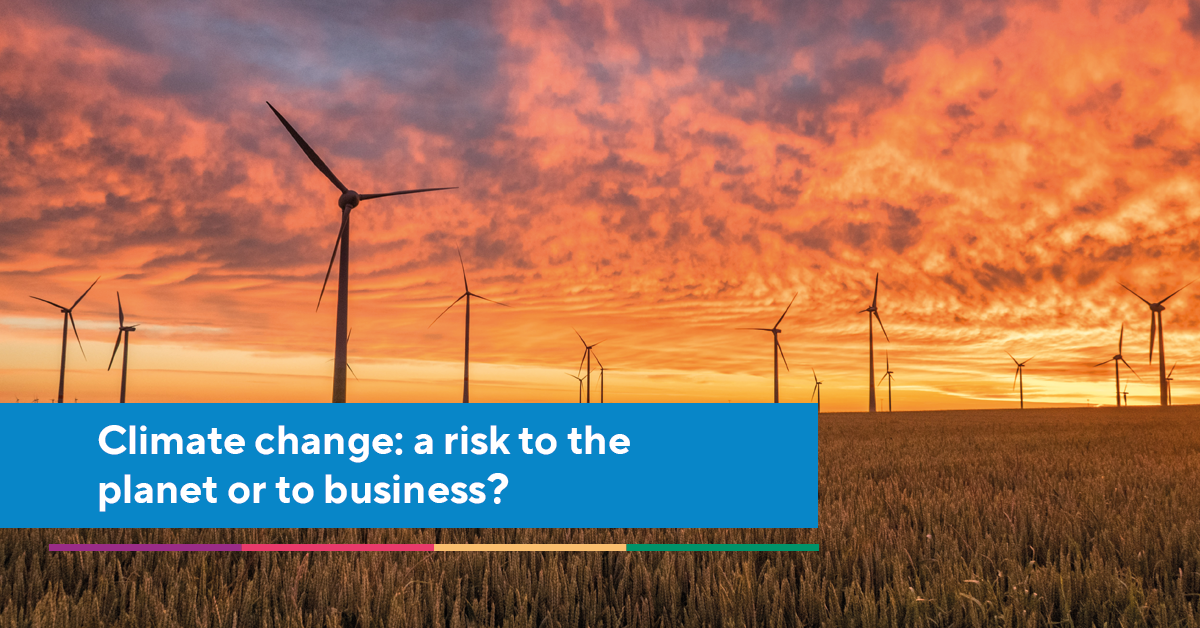There is an increasing need for businesses to become more sustainable and responsible. This is due to stakeholder pressure, emerging regulation, and the climate-related risks to operations and business continuity. Greenhouse gases (often referred to in terms of carbon emission equivalents) are most closely linked to climate change and are the more quantifiable environmental concerns. This often makes them a priority for businesses.
What are the three types of scope emissions?
A business’ emissions can be categorised into Scope 1, 2, and 3. Scope 1 is the direct emissions from a business’ operations and Scope 2 relates to the indirect energy the business purchases for its operations. Scope 3 accounts for all other indirect emissions which are outside of a business’s own operations.
Scope 1 and 2 emissions are both relatively easy for a business to calculate themselves, but Scope 3 presents a complex challenge for many due to the vast amounts of external data required. This means businesses often delay calculating Scope 3 using supplier data.
Some of the biggest drivers for businesses to start estimating and reducing their Scope 3 emissions is the Science-Based Target initiative (SBTi), followed by emerging regulation or standards (such as CSRD or ISSB).
What are the two types of Scope 3 emissions?
There are 15 categories of Scope 3 emissions which are split into two types:
- Upstream emissions: all the emissions in the value chain from any activity related to producing your product. This includes all a business’ purchased goods and services, as well as things such as business and employee travel.
- Downstream emissions: all the emissions in the value chain from any activity related to getting your product to the end consumer, as well as those emissions from any leased assets or franchises. Downstream emissions also relate to the use of the product and its end-of-life treatment.
For manufacturing, consumer packaged goods, or retail, Scope 3 typically accounts for more than 70% of total emissions. As a result, these businesses can have 10-24x more impact by focusing on Scope 3 emissions reduction as opposed to direct emissions reduction (Scope 1).
How do I define which Scope 3 categories are most important to my business?
Of the 15 emissions categories within Scope 3, two of them make up the vast majority of what we call 'supply chain emissions'.
These are purchased goods and services (category 1) and upstream transportation and distribution (category 4).
Supply chain emissions are responsible for 80%+ of Scope 3 for most retailers and consumer goods companies.
At Supply Pilot we help businesses engage their suppliers to better understand emissions and estimate them in an accurate and precise way. This is particularly relevant to businesses who have large supply bases and product portfolios, who as a result, need to collect vast amounts of data from suppliers.
This most typically means calculating estimates for category 1 and 4 emissions to gain a more granular understanding of Scope 3 emissions. This level of detail enables businesses to make more well-informed decisions and helps them to make a big positive impact by accelerating the decarbonisation of their supply chain. This is done by engaging and activating all suppliers around a GHG emissions reporting and reduction programme, specific to the brand leading it. This is the best way to obtain the more granular data which best reflects that business’ supply chain activity.
How do I identify the most appropriate data sources?
Calculating and reporting on category 1 emissions
According to the Greenhouse Gas (GHG) Protocol, there are four ways a business can estimate the emissions of purchased goods and services (or category 1 emissions) under Scope 3.
- Spend-based
A spend-based estimate is derived from the amount of money spent on a purchased product or service multiplied by an industry average emissions factor. Spend-based is recognised as the simplest method but it is also the least accurate estimation method because it is based on the value of spend and industry averages. - Average-based
An average-based estimate is based on the weight or quantity of a purchased product or service multiplied by average category emissions factors. Weight-based data, by its nature, is more constant and comparable between companies. This makes it a lot more accurate than spend-based data. The more granular/accurate the emissions factors, the more accurate the result. - Hybrid
Hybrid estimations are a combination of Scope 1 and 2 emissions data provided by suppliers, alongside spend or average-based data for things such as waste and raw materials. Hybrid data can be more accurate than both spend and average-based data as it uses a greater amount of data provided by suppliers as opposed to industry averages but is also more complex. - Supplier-specific
Supplier-specific calculations come from individual lifecycle analyses (LCA) directly from suppliers. This data is the most accurate.
We recognise that many businesses aren't sure where to get started with their sustainability journey, which is why we have developed The Supply Pilot Kickstart Assessment. The assessment enables businesses to first understand what kind of data their suppliers are able to give them. Providing businesses with a greater insight into their suppliers’ carbon literacy and wider sustainability capabilities. This enables them to more easily assess where they are on their journey and tailor communications and actions accordingly going forward.
Look out for our next blog which explores in more depth the limitations of spend-based analysis.



